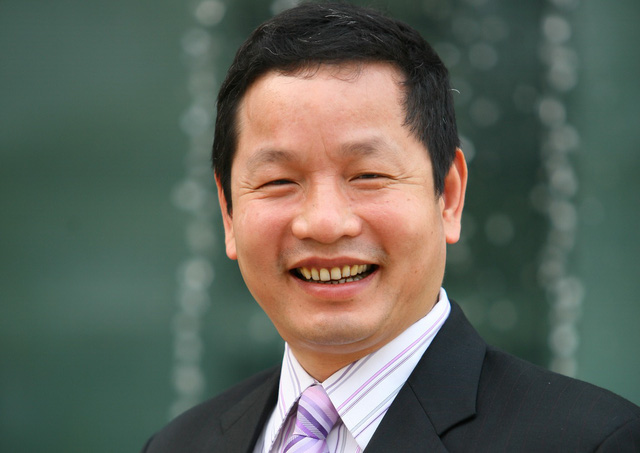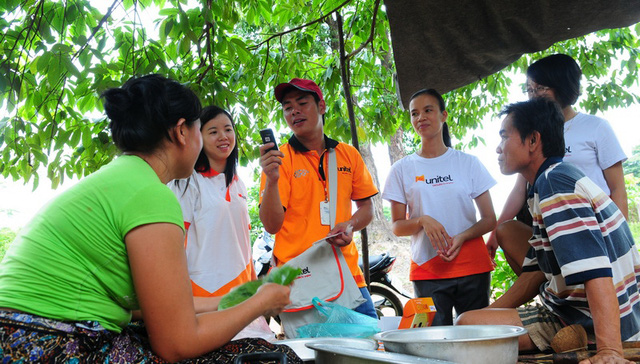Almost no Internet cafés or shops existed in major Vietnamese cities during the first years of the Internet in Vietnam.
>> The Internet turns 20 in Vietnam: P5 – The premier’s first email
>> The Internet turns 20 in Vietnam: P4 – National domain .vn
>> The Internet turns 20 in Vietnam – P3: The ‘semi-illegal’ era
>> The Internet turns 20 in Vietnam: P2 – Australian professor’s contribution
>> The Internet turns 20 in Vietnam: P1 – Forerunners
Despite the air of expectancy amongst the public, hardly any public access points were established in the years following the launch of the Internet in Vietnam in 1997.
Vu Hoang Lien, former director of Vietnam Data Communication Co. (VDC), belonging to Vietnam Posts and Telecommunications Group (VNPT), said that only a limited range of Internet services including email, and web and File Transfer Protocol (FTP), the standard network protocol used for the transfer of files between computers, were available at this early stage.
The Internet in Vietnam grew at a snail’s pace in those early years.
“No one, including state-run enterprises like ours, was allowed to open Internet shops or cafés then,” Lien added.
According to Truong Gia Binh, chairman of FPT Group, one of the country’s leading Internet service providers, the Internet at that time was administered under Decree 21/CP, issued by the government in April 1997.
The decree stipulated that the scope of the launch be restricted to where it could be managed effectively.
FPT was among the country’s first licensed Internet Service Providers (ISP), along with NetNam, VNPT and SaigonNet.
 |
| Truong Gia Binh, chairman of FPT Group. Photo: FPT |
Immense hurdles remained in liberating the Internet market, with VNPT the sole supplier of network infrastructure, upon which the other three ISPs hinged.
“FPT resorted to every possible means to survive this difficult period,” Binh recalled.
By 2000, a mere 0.2 percent of the population in Vietnam had had access to the Internet. By comparison, most African countries had an access rate of around two percent.
“We were frustrated and kept telling ourselves that our country couldn’t remain this way forever,” he added.
However, a milestone in the development of the Internet in Vietnam soon occurred.
One had already happened of course, the inauguration of the Internet and the granting of permits to the first four ISPs.
The next was the day that the telecom market was liberated to encourage competition and reduce the cost to the consumer.
In February 1999, the National Administration of Posts launched the Voice over Internet Protocol (VoIP), a technology for the delivery of voice communications and multimedia sessions over Internet Protocol (IP) networks, including the Internet.
In February 2000, the National Administration of Posts officially granted a permit to the military-run Viettel to provide long-distance and international phone calls via VOIP.
The move was intended to break the monopoly and reduce phone tolls and the cost of the Internet.
The watershed moment did not come until February 2001, however, when Decree 55 on management of the Internet was issued by the government to replace Decree 21.
The order ‘unlocked’ the Internet in Vietnam and allowed room for the network to grow quickly.
Internet shops and cafés soon proliferated, as people, particularly the new generation, could finally access the global computer network.
“There was no specific command, but things kept changing for the better each day. In no time, we found ourselves providing technical assistance to a mushrooming number of Internet shops and cafés,” Lien, former VDC director, recalled.
Many wasted no time in opening said Internet shops, which were extremely successful despite still relatively high Internet rates.
“With only desktop computers and ADSL connections available, venues were invariably packed with customers, mostly young people,” he added.
Asymmetric digital subscriber line (ADSL) is a type of DSL broadband communication technology used to connect to the Internet.
Though people could in principle register for subscriptions, there remained stumbling blocks that deterred individual users from gaining Internet access in their homes.
Public places therefore proved a magnet for those who wanted to stay connected, particularly young intellectuals and students.
Internet cafés and shops burgeoned exponentially as games, though mostly played offline, became available.
The first individual user to officially connect to the Internet in his home was Vo Hong Nam, son of legendary late General Vo Nguyen Giap.
 |
| Workers from Vietnam Posts and Telecommunications Group (VNPT) install Internet cables at clients’ homes. Photo: VNPT |
Nam, a tech geek and businessman, contributed substantially to the growth of the Internet during this time.
Among VDC’s first 300 clients in late 1997, most were scientists or officials with the need for constant information exchange with other countries.
“Universities and research institutes capitalized on the Internet at this time, while state agencies, enterprises and businesspeople were yet to take full advantage,” Lien added.
Meanwhile, average people, especially high school and university students, found Internet fees exorbitant, prompting them to try everything possible to obtain cheaper connections.
When ADSL was eventually offered at a lower rate, demand for household Internet connections surged.
The number of private subscriptions increased tenfold within only a few years, according to the Vietnam Internet Association.
Today’s youths would find it difficult to comprehend the insatiable thirst for the Internet twenty years ago, thanks to the current availability of Wi-Fi in most public places.
The concept of specialty Internet cafés has since died out, as most cafés and public places now offer Wi-Fi connection for free.
Using any android or smartphone, users can access non-stop Internet even without Wi-Fi.
“We now enjoy an auspicious environment for Internet growth,” FPT chair Binh acknowledged.
“However, the quality of our connection still lags behind other parts of the world.”
“Providers need to improve this and break new ground in terms of technology to better tap into Vietnam’s huge potential and demand,” he urged.
“Vietnam’s 4G service is behind other countries in the region while the rest of the world advances toward 5G,” he said.
Nearly 50 million Vietnamese, most of whom are young people, currently have non-stop access to the Internet. This equates to approximately 53 percent of the population.
Seventy-eight percent of these people use the Internet on a daily basis, according to the Vietnamese Ministry of Information and Communications.
Vietnam’s Internet accessibility is now higher than the world average, which currently sits at 46.64 percent.
Vietnam also ranks 16th among Asian countries in terms of its number of regular Internet users.
The number of Facebook accounts and use of social media and search engines, as well as time spent online in Vietnam, are also remarkably higher in comparison to other countries in the region.
“Without the Internet, our country would be caught in the poverty trap,” said Binh.
“The greatest value of continually fostering the growth of the Internet is that Vietnam is no longer isolated from the world,” he concluded.
Like us on Facebook or follow us on Twitter to get the latest news about Vietnam!


















































